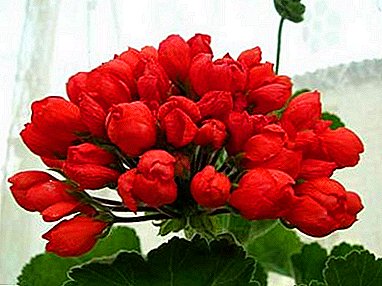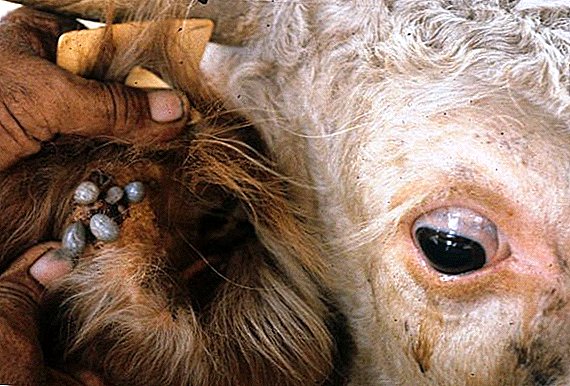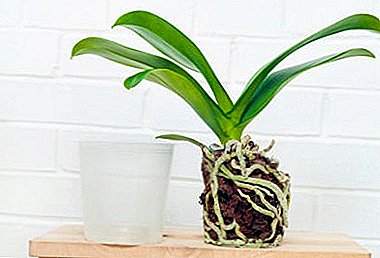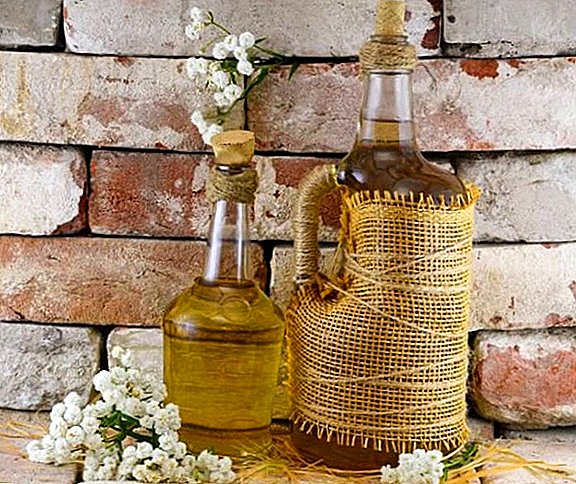 There are different types of drinks. Some of them are designed to quench their thirst, others, on the contrary, are used for their burning effects. Such drinks contain alcohol in their composition. Quality alcoholic drinks are made from natural raw materials, which contains in its composition sugar. During fermentation, they break down into simpler structures and produce alcohols, including ethyl.
There are different types of drinks. Some of them are designed to quench their thirst, others, on the contrary, are used for their burning effects. Such drinks contain alcohol in their composition. Quality alcoholic drinks are made from natural raw materials, which contains in its composition sugar. During fermentation, they break down into simpler structures and produce alcohols, including ethyl.
Some people do not trust industrial manufacturers in matters of quality and taste, so they prefer to prepare their own, home-made products. In this case, both classic raw materials, like wheat, and non-standard, like berries and fruits, are used. In this article we will look at the secrets of making homemade gooseberry wine - a step-by-step recipe for its preparation and important subtleties of this process.
Inventory and kitchen appliances
In order to prepare this flavored drink at home, you will need the simplest inventory:

- tolkushka;
- a bowl;
- large glass jar;
- gauze;
- fermentation tank;
- rubber glove or water seal.
Did you know? Nowadays, no one questions the safety of homemade wine at a feast. But it was not always so. In ancient Greece, a good host, receiving guests, always sipped a sip of wine first, so that everyone could be convinced that wine is not poisoned and suitable for use. In addition to poisons, which were then mixed into the food of the enemy, fungus, which got into the house wine in its manufacture, could poison the drink. The host drinking wine guaranteed the purity and safety of this noble product.
Ingredients
- Gooseberry berries - 1.5 kg.
- Sugar - 0.5 kg.
- Water - 0.5 l.
Preparation of gooseberry berries
Carefully select the whole mass of ripe berries. Remove from it unripe, rotted berries, gooseberries with signs of mold or just damaged. On top of the skin of these berries there are natural yeast fungi, so you do not need to wash the berry mass, otherwise you will interrupt the fermentation process.

Step by step recipe for homemade wine
Gooseberries - the second after the grape fermentation activity. They do not require additional stimulation, therefore, subject to the basic rules for harvesting, the wine will be of high quality and tasty.
Homemade wine can be prepared from many fruits and berries: grapes, plums, apples, raspberries, yoshty, black chokeberry, black currant, rose petals.
Take your picked berries. They do not need to be washed, wild yeast living on them will ensure the normal process of fermentation of wine. If you have a lot of berries, take a metal or plastic tray with high sides. It will be convenient to knead the gooseberry. A small amount can be kneaded in a conventional bowl. Pour the berries into a container, distribute them in an even layer and gently knead with a crush. Everything will be used: pulp, bones, skin. Gooseberry difficult gives juice, so knead carefully. Pulp the resulting pulp into clean jars to half the volume.

As soon as the berry mass is ready, start adding water. Water will reduce the acidity of the mass and dissolve the juice remaining in the pulp. The optimal proportion will be: one part of water to three parts of the berries. Water quality must be impeccable. Take only drinking water from the store or filter well well. Raw or boiled tap water for this case will not work.
Start adding sugar. Count it from the same proportions as water. It will be reasonable not to fill up the whole volume at once, but to leave about a quarter to add the product as the wine matures. Yeast fungi will react to such feeding and more actively ferment.
Important! Sweeten the wort gradually so that the yeast always has glucose to feed. If you pour all the sugar you need at one time, it will precipitate and be removed at the first drain.
Berry must ready. Cover the resulting jars with a thin, clean cloth (gauze) - this will save them from insects. Do not tighten it tightly so that the wort is enriched with oxygen. Transfer the jars to a warm room to start fermentation. The temperature should not be below 22 degrees. For the next week, mix the contents of the cans twice a day with a new wooden spoon or chopstick. Stirring will interchange the bottom and surface fungi, and they will all receive the same amount of oxygen and sugar.

A week after closing the cans, you will see how large fragments of berries (pulp) surfaced - pulp, peel. Remove them with a spoon or small strainer, set aside in a separate bowl and squeeze. Strain the wort untouched in the cans, strain through larger gauze or a larger sieve. Add to it the wort, which is squeezed out of the pulp, discard the pulp, and pour the juice over the cans or put into one large container for further fermentation.
Find out what properties the gooseberry has for the human body
In order for your wine not to become vinegar, you need to block access to oxygen and at the same time ensure the release of carbon dioxide. To do this, close the necks of the containers with hydraulic locks or fit ordinary rubber gloves for this.

If you stopped on gloves, put them on the neck and pierce a small hole in the index or middle finger with a thin needle. This method is convenient, but not very good for wine, because carbon dioxide does not have time to go out in sufficient volumes and the wort stagnates.
Important! Make sure that excess air does not get into the container with the fermented wort. Yeast will be enough of the oxygen that enters the drink during draining from the sediment. Continuous access to air will lead to mold.
The hydrolock, on the contrary, provides good air exchange. Make it easy. Take a tight cap and a plastic hose up to a centimeter in diameter. Make a hole in the lid of the same diameter and insert a hose into it. The hose should be held tightly in the hole so as not to allow air in through. It will be useful to treat the place of the joint with a sealant. Cover the neck and lower the other end of the hose into a glass of water. Water and will act as a gate: release carbon dioxide, do not let in atmospheric air.

Every two weeks, drain the clear liquid from the sediment, which will be formed at the bottom of the jar. The sediment volume will be large, up to 50% of the total mass. Drain the began to ferment the wort into clean jars and add a little sugar to them before closing to the trap again. In the process of draining the yeast will receive the necessary oxygen and glucose supplement. From time to time be sure to taste the drink. If he has pronounced acidity, you are doing everything right. If the wort has sweet notes, do not add sugar, so that the fungi have time to process the existing glucose before the next drain.
You can even make wine at home from jam or compote.
The total period of formation of this drink is two or two and a half months. Determine that the wine is ready, you can by the complete absence of sediment and air bubbles in the trap. This drink can already be consumed, but finally it is not necessary to close it in airtight containers. In it, a process called "fermentation" takes place. This allocation of insignificant amounts of carbon dioxide and the formation of a unique taste and aroma.

To ensure normal maturation of the drink, pour it into the final containers (usually bottles are used for this) and tightly plug the neck with a cotton swab. Cotton wool will release excess carbon dioxide and prevent contamination of the drink by foreign microflora.
Did you know? Wine tasting usually refers to the evaluation of its aroma, and not its use. That is why the role of tasters usually take young women who can distinguish a greater number of odors compared to men. Such availability of this drink in our time would not have liked the ancient Romans, who prescribed the death penalty to the woman who drank wine. Roman mores softened only in the II century BC, when the penalty was replaced by divorce.
Depending on the sugar content and the activity of the wine microflora, Fermentation can last from one month to six months. Wine can be consumed throughout this period, but you will get the best taste only after the fermentation process is completed. The optimal dwell time for cotton is three months. After that, the container can be closed tightly and set aside for storage.
What berries or fruit can be combined
Gooseberry is an independent berry and gives a taste during fermentation, similar to grape wine. To diversify the bouquet, you can pour gooseberry with a must of red currant or black currant when draining from the sediment. It will give pronounced acidity and slight bitterness.

Fermentation with black currants will give the final product refined tartness. Raspberry wort significantly sweeten the gooseberry. As for the fruit, the addition of apples will make the gooseberry wine table, and the peach pulp will sweeten it significantly.
At home, raspberry and cranberry berries make a delicious liqueur.
How to store homemade wine
To start the container. These should be dark glass bottles, spotlessly cleaned, sterilized before pouring. Pour the beverage into bottles, close them with stoppers, wrap in two layers with natural fabric and dip into hot, but not boiling water (approximately 60 degrees). It is necessary to maintain bottles in such conditions for fifteen minutes. Remove the bottles from the hot water, wipe them with a dry terry towel and store them.

Storage room should be sufficiently wet (70%) and cool - no warmer than 12 degrees. Place the bottles horizontally. So the drink will come into contact with the cork and moisten it, while maintaining the tightness of the plug. Gooseberry wine is a weak product, so it can be stored for no longer than three or four years. Then it begins to age, dry out and fade. Do not put the bottle in the refrigerator. Constant vibration will destroy the bouquet, and the wine will be spoiled. In good wine cellars, they do not even remove the dust from the bottles in order not to disturb them. Keep wine as far as possible from preservation and chemicals, because it absorbs odors through the cork.
Important! Keep homemade wine in extremely calm conditions. It does not tolerate shaking, vibration, noise and bright light. - uhThese external factors destroy his bouquet.
What to serve
Since the gooseberry drink is light, canteen, he can accompany the entire dinner. Fish, vegetable dishes, chicken dishes, chicken and turkey are well shaded by this wine. It also sounds great with desserts, any fruit and coffee drinks.

Common mistakes
Failure to follow the basic rules of winemaking leads to the fact that the final product is spoiled. Be careful not to make these missteps.
- Poor water. Too hard water slows down the fermentation process. Do not save on water, buy a few bottles of high-quality drinking water. Excess water also badly affects the quality of the final product - the wort ferments badly, and the wine is too weak.
- Too many berries in the container. To them you will add water and sugar, which will take away part of the volume, and during fermentation the wine will pour out beyond the limits of the container. To avoid this, fill the container exactly halfway.

- Rare mixing. To prevent fungi from dying off due to lack of oxygen, stir it twice a day while the drink is becoming. So the yeast will receive the same amount of air and sugars.
- Dirty bottles. Be sure to perform sterilization before finally bottling the drink. Foreign microflora can destroy the wine and give it a mouse smell.
Did you know? Tanks for storing wine were found in archaeological excavations of settlements of various nations. Their age is hundreds and thousands of years. But the oldest container for wine, really filled with it, was found in the territory of modern Germany near the city called Speyer. It is dated to the III century of our era. This bottle was sealed with wax, and its contents were preserved by mixing with olive oil, which protected the wine from moisture. Now this unique bottle is kept in the Palatinate Museum.
Useful tips
Simplify home winemaking help these simple tricks.
- Heat water. Warm water added to the gooseberry pulp will dissolve the sugar more quickly and wash the juice from the skins and pulp.
- Taste. In the process of pouring wine from the sediment and fermenting the wort, try a drink to determine whether you need to add sugar or change the temperature of fermentation.
- Air out. If the wine turns out to be too sweet, sour, or starts to give out mold, pour it in a long thin stream into another sterilized container. This process will enrich the drink with oxygen and increase the activity of yeast.
- Clean the wort. Carefully filter it before closing it under the water seal, so that the sediment is fine and uniform. The pulp, trapped in fermenting wine, can cause the appearance of extraneous fungal cultures.
- Cool the wine. If you do not plan to keep the drink for a long time, put it in a refrigerator for two or three days. There it can be in unsealed form. Long shelf life requires careful aging. Put it in a cellar or a cool room and leave it there before uncorking.
- Clean the mold. If you overlooked, and the tightness of the water seal was broken, mold cultures will begin to develop in the wort. Such a wine can be saved. Using a scoop, remove the islets of mold from its surface and ventilate it by pouring. Close under the water trap and put on the fermentation again.






Home winemaking is a matter that brings pleasure to true lovers. Before you do it, consider whether you have enough patience. Choose the best berries as a raw material. Carefully sort through them and sort them to make high-quality pure juice.
What would you have in the future turned out excellent wine from such varieties of gooseberry as "Grushenka", "Malachite", "Honey", "Krasnoslavyansky", "Komandor", "Kolobok", "Consul"
Carefully knead the skin, pulp, seeds to get a good yield of juice. Ferment the wort in clean conditions. so as not to contaminate the drink and maintain the purity of the containers between which the wine is poured. Store this noble drink in suitable conditions, and he will give you his best taste and aroma.












